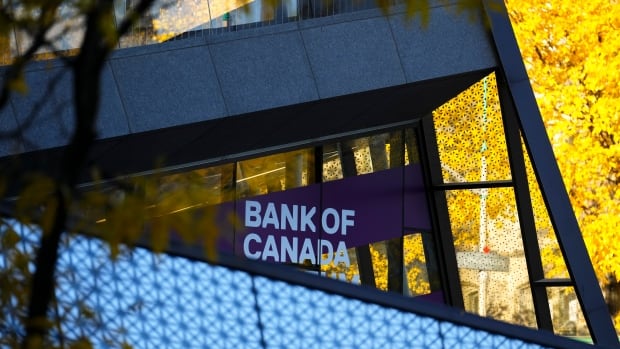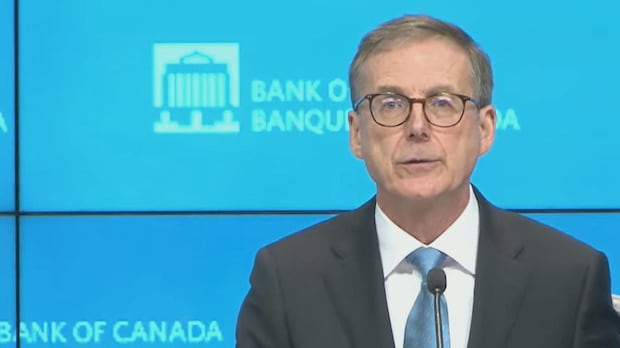
The Bank of Canada has lowered its key interest rate to 3.75 per cent, making a 50 basis-point cut for the first time since the COVID-19 pandemic.
Before Wednesday, the rate stood at 4.25 per cent. Economists were expecting the central bank to go with a larger-than-usual cut, compared to the 25-basis-point downgrades made in June, July and September.
The last time the bank made a cut this size was on March 27, 2020.
As concerns over inflation have subsided — out-of-control price growth, the catalyst for the central bank’s initial rate-hike campaign, is now back within the target range — the bank has focused on cutting to keep inflation stable and support economic growth, which has slowed under the pressure of high rates.
“We need to stick the landing,” Bank of Canada governor Tiff Macklem told a news conference Wednesday morning.
“With inflation back to two per cent, we want to see growth strengthen. Today’s interest rate decision should contribute to a pickup in demand.”
Macklem outlined the economic conditions that informed the bank’s rate cut decision. He noted that core inflation has continued to ease, as has shelter inflation, though he noted that housing prices are still elevated. Excess supply in the economy has brought consumer prices down.
“Job layoffs have remained modest but business hiring has been weak, which has particularly affected young people and newcomers to Canada. Simply put, the number of workers has increased faster than the number of jobs,” he added.
Bank of Canada Governor Tiff Macklem, who on Wednesday cut the key interest rate to 3.75 per cent, says inflation has come down ‘significantly’ in recent months.
Macklem noted during the conference that, should the economy continue to evolve broadly in line with its forecast, the bank expects to reduce the policy rate further. But he cautioned that the timing and pace of cuts would depend on incoming economic data and its potential impact on the bank’s inflation outlook.
He repeated a now-familiar refrain, saying that the Bank of Canada will take decisions one meeting at a time.
Why aren’t Canadians feeling relief?
During a news conference, Macklem responded to questions from reporters who asked what he would say to Canadians who aren’t feeling the impact of lower inflation and interest rates in their everyday lives.
“It has been a long road back from the high inflation we experienced coming out of the pandemic,” said Macklem. “It’s been a long fight, but it’s worked…. I think Canadians can breathe a sigh of relief.”
One reporter pushed back on the governor, saying that many Canadians aren’t feeling relief. “We’re very aware of that,” Macklem responded.
“You can see it in our own consumer survey. There is a lot of hesitancy. I think the message today is that, with inflation down, Canadians don’t have to worry as much about big changes in their cost of living.”
Canadians might not be feeling relief from lower inflation because it doesn’t mean lower prices. A lower inflation rate indicates that prices are still increasing, but doing so at a slower pace.
Avery Shenfeld, chief economist of CIBC World Markets, wrote in a note to clients that “it would take a significant turn of events to stand in the way of another cut of that magnitude in December.”
“That said, as has been its practice of late, the bank has kept its options open by not signalling anything specific about the size of individual rate cuts ahead,” Shenfeld wrote.
